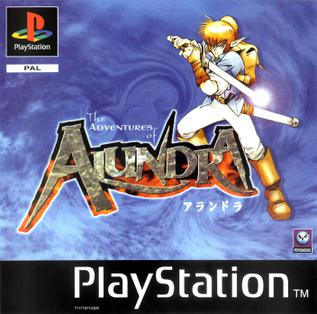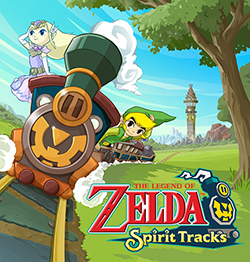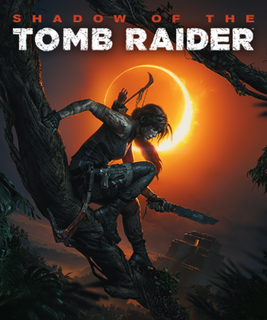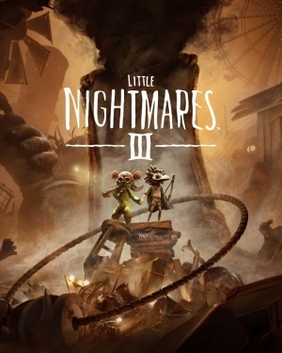Related Research Articles
An action-adventure game is a video game hybrid genre that combines core elements from both the action game and adventure game genres.

Superman: The New Superman Adventures, commonly referred to as Superman 64, is an action-adventure video game developed and published by Titus Interactive for the Nintendo 64 and based on the television series Superman: The Animated Series. Released in North America on May 29, 1999, and in Europe on July 23, it is the first 3D Superman game.

Alundra, released in Europe as The Adventures of Alundra, is an action-adventure video game developed by Matrix Software for the PlayStation, originally released in 1997.

Sphinx and the Cursed Mummy is a 2003 action-adventure video game developed by Eurocom and published by THQ for GameCube, PlayStation 2, and Xbox. A version for mobile phones was released in 2004. THQ Nordic published a high-definition remaster for personal computer systems in 2017, and Nintendo Switch in 2019.

Kirby is an action-platform video game series developed by HAL Laboratory and published by Nintendo. The series centers around the adventures of Kirby as he fights to protect and save his home on the distant Planet Popstar from a variety of threats. The majority of the games in the series are side-scrolling platformers with puzzle-solving and beat 'em up elements. Kirby has the ability to inhale enemies and objects into his mouth, spitting them out as a projectile or eating them. If he inhales certain enemies, he can gain the powers or properties of that enemy manifesting as a new weapon or power-up called a Copy Ability. The series is intended to be easy to pick up and play even for people unfamiliar with action games, while at the same time offering additional challenge and depth for more experienced players to come back to.

Fatal Frame III: The Tormented is a survival horror video game developed by Tecmo for the PlayStation 2. The third entry in the Fatal Frame series, it was published by Tecmo in 2005 in Japan and North America, and by Take-Two Interactive in Europe in 2006. Set after the events of the first two games, the story revolves around three characters who lost loved ones and are drawn into the supernatural Manor of Sleep. The gameplay revolves around exploring the Manor and tackling hostile ghosts using the Camera Obscura. Each character has different strengths and weaknesses, such as stronger attack or stealth elements.

The Legend of Zelda: Spirit Tracks is a 2009 action-adventure game developed and published by Nintendo for the Nintendo DS handheld game console. Set a century after The Wind Waker and its sequel Phantom Hourglass, the storyline follows the current incarnations of Link and Princess Zelda as they explore the land of New Hyrule to prevent the awakening of the Demon King Malladus. Players navigate New Hyrule, completing quests that advance the story and solving environmental and dungeon-based puzzles, many requiring use of the DS's touchscreen and other hardware features. Navigation between towns and dungeons is done using a train, which features its own set of mechanics and puzzles.

Silent Hill: Shattered Memories is a 2009 survival horror game developed by Climax Studios and published by Konami Digital Entertainment. It was released in December for the Wii and ported to the PlayStation 2 and PlayStation Portable platforms in January 2010. In April 2014, it appeared on the PlayStation Network in Europe.

Samorost 2 is a puzzle point-and-click adventure game developed by Amanita Design. Released for Windows, OS X and Linux on 8 December 2005, the game is the second video game title in the Samorost series and the sequel to Samorost. On 5 November 2020, the game received an update with enhanced visuals, brought fullscreen support & replaced level codes with a level select system. This version also received iOS & Android ports.

Tarsier Studios is a Swedish video game developer based in Malmö.

LittleBigPlanet is a puzzle platform video game series created and produced by British developer Media Molecule and published by Sony Interactive Entertainment. Most games in the series put a strong emphasis on user-generated content and are based on the series' tagline "Play, Create, Share". The tagline represents the three core elements of the series: playing alone or with others locally or online, creating new content using the in-game creation tools, and sharing creations and discoveries online with other players.

Puzzle Agent 2 is an adventure/puzzle game by Telltale Games, in collaboration with Graham Annable. It is the sequel to Nelson Tethers: Puzzle Agent. It was released on June 30, 2011.
Pirates of the Caribbean: Armada of the Damned is a cancelled action-adventure role-playing video game that was being developed by Propaganda Games for the PlayStation 3, Xbox 360, and Microsoft Windows platforms. Originally set to be published by Disney Interactive Studios, it was the first attempt to create an open world game based on the Pirates of the Caribbean film franchise. The project was cancelled in October 2010, soon before the closure of Propaganda Games.
Captain Toad: Treasure Tracker is a 2014 action puzzle video game developed and published by Nintendo for the Wii U. The game was re-released for the Nintendo Switch and Nintendo 3DS in 2018 with additional content. It is a spin-off of the Super Mario series and a part of the larger Mario franchise. The game stars Captain Toad and Toadette as they complete levels, defeat enemies and save each other from the antagonist Wingo. Each level is contained within a miniature diorama-like environment that requires puzzle-solving and platforming challenges to complete. The player also uses the Wii U GamePad to rotate the camera and reveal new information and interact with the environment.

Kameo: Elements of Power is a 2005 action-adventure video game developed by Rare and published by Microsoft Game Studios. The player controls Kameo, a 16-year-old elf, who must travel across the land, rescuing her family while collecting Elemental Sprites and Warriors in a beat 'em up style combat against the trolls that stand in her way. Kameo's ten elemental powers let her transform into creatures and use their varied abilities to solve combat-oriented puzzles and progress through the game's levels.

Little Nightmares is a puzzle-platform horror adventure game developed by Tarsier Studios and published by Bandai Namco Entertainment for PlayStation 4, Windows and Xbox One, released in April 2017. A Nintendo Switch version was released in May 2018, followed by a Google Stadia version in June 2020 and mobile versions were released on 12 December 2023 and published by Playdigious. Set in a mysterious world, Little Nightmares follows the journey of Six, a hungry little girl who must escape the Maw, an iron vessel inhabited by monstrous, twisted beings. The game received positive reviews upon release with critics praising its atmosphere, gameplay, graphics, and sound while criticizing its checkpoint system and short length. A follow-up, Little Nightmares II, was released in February 2021, and a third entry in the series, Little Nightmares III, is in development by Supermassive Games.

Shadow of the Tomb Raider is a 2018 action-adventure game developed by Eidos-Montréal and published by Square Enix's European subsidiary. The game is the sequel to Rise of the Tomb Raider and is the twelfth mainline entry in the Tomb Raider series, as well as the third and final entry of the Survivor trilogy. It was released for PlayStation 4, Windows, and Xbox One in September 2018. Versions for Linux and macOS, and Stadia, were released in November 2019. After release, the game was expanded upon with downloadable content in both a season pass and as standalone releases.

Little Nightmares II is a puzzle-platform horror adventure game developed by Tarsier Studios and published by Bandai Namco Entertainment. It may be played as a self-contained experience. The story follows Mono, who must work together with Six, the protagonist from the previous game, to survive the horrors of the Pale City and discover its dark secrets. The game was released for Google Stadia, Nintendo Switch, PlayStation 4, Windows and Xbox One on 11 February 2021. An upgraded version, titled Little Nightmares II: Enhanced Edition, was developed by Supermassive Games and released on 25 August 2021 for PlayStation 5, Windows and Xbox Series X/S.

Silt is a surreal underwater puzzle-adventure indie horror game developed by Spiral Circus and published by Fireshine Games for Microsoft Windows, Nintendo Switch, PlayStation 4, PlayStation 5, Xbox One, Xbox Series X/S, in which the player controls a deep-sea diver who can possess the diverse marine life that enters their vicinity. It was released on June 1, 2022.

Little Nightmares III is an upcoming puzzle-platform horror adventure video game developed by Supermassive Games and published by Bandai Namco Entertainment for Nintendo Switch, PlayStation 4, PlayStation 5, Windows, Xbox One and Xbox Series X/S. It serves as a stand-alone sequel to the first two Little Nightmares games. The game follows two new child protagonists, Low and Alone, as they navigate through The Nowhere and escape from a looming threat. It is scheduled for a 2025 release.
References
- 1 2 "The City of Metronome". IGN . Archived from the original on July 17, 2022. Retrieved July 17, 2022.
- ↑ "The City of Metronome PC". Gamepressure . Archived from the original on July 9, 2023. Retrieved July 18, 2022.
- ↑ "The City of Metronome for PC Reviews". Metacritic . Archived from the original on July 17, 2022. Retrieved July 17, 2022.
- ↑ Chester, Nick (April 26, 2007). "Breath out, City of Metronome indefinitely on hold". Destructoid . Archived from the original on July 17, 2022. Retrieved July 17, 2022.
- 1 2 3 Bienaimé, Pierre (March 29, 2012). "On the Trail of Metronome, The Sound-Bending Marvel That Never Was". Kotaku . Archived from the original on July 19, 2022. Retrieved July 18, 2022.
- 1 2 Williams, Berian (June 22, 2005). "The City of Metronome - E3 2005". Adventure Gamers . Archived from the original on July 17, 2022. Retrieved July 16, 2022.
- ↑ "The City Of Metronome by Team Tarsier". Ps3Blog . 9 January 2006. Archived from the original on 28 September 2021. Retrieved July 18, 2022.
- 1 2 3 4 Purchese, Robert (July 13, 2021). "Whatever happened to City of Metronome, the missing game by Little Nightmares developer Tarsier?". Eurogamer . Archived from the original on January 13, 2023. Retrieved July 16, 2022.
- ↑ Vázquez, Luis (April 30, 2017). "The City of Metronome". Vandal . Archived from the original on July 17, 2022. Retrieved July 16, 2022.